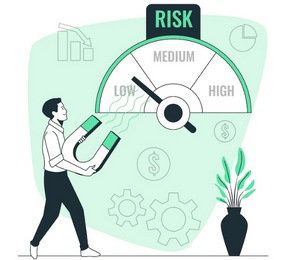The need for secure and affordable supply chains has long existed, albeit the pandemic and ongoing disruption have made it more urgent. It has become evident that supply networks must also become robust and sustainable in order to cope with large market shifts and an unpredictable trading environment. The pandemic revealed the risks that a worldwide crisis can provide to businesses if their supply chains are not set up to function in such circumstances. Therefore, a resilience plan is required to satisfy shifting customer needs and guarantee sustainable growth.
The capacity of a supply chain to repair, reroute, or substitute inputs is known as supply chain resilience. Through the provision of real-time data, visibility, and responsiveness, technology has fundamentally altered the way that supply chains can be resilient.
Adoption of technologies like artificial intelligence (AI), the internet of things (IoT), blockchain, and 5G makes it easier to collect real-time data as the amount of data available increases dramatically. The top technologies that supply chain executives are looking to implement in their organisations are cloud, artificial intelligence, and digital twins. Systems equipped with this technology can enhance supply chain visibility from end-to-end and enable higher traceability at various stages of the process. This enables increased collaboration across sectors and transparency in the supply chain. AI-enabled systems can collect data on competitor activity, customer feedback, and even identify opportunities and trends. Furthermore, when integrated with machine learning and big data, digital supply chain technologies can analyse and learn from data in a way that gives supply chain executives the real-time information they need to react swiftly to disruptions and unforeseen events.
Particularly during unpredictable times, digital technology helps optimise supply chain operations through virtual inventories and predicted demand. By preventing obsolescence, improving placement, enabling proactive planning, and enabling responsive replenishment, the utilisation of real-time sensor data and tracking technology supplemented by analytics helps optimise inventory management. By dynamically calculating reorder points, amounts, and safety stock based on market dynamics and improved visibility, inventory optimization software enables more comprehensive inventory segmentation than the straightforward ABC classification.
A virtual simulation model known as a "digital twin" can also be created by utilising data that shows actual inventory movement in a supply chain as opposed to planned movement. This enables better understanding of what is required, identifying the excess, and the influence of inventory requirements on quality, production, lead time, and shipping frequency. So, without sacrificing efficiency, a digital supply chain driven by analytics may optimise inventories and improve resilience.
Find out more on the role of digitisation and analytics in supply chain resilience, on 30th - 31st may, 2023 at the Supply Chain Risk and Resilience Forum, in Berlin, Germany so you don't feel left out in the industry!
To register or learn more about the Forum please check here: https://bit.ly/3DsfWE4
For more information and group participation, contact us: [email protected]
















